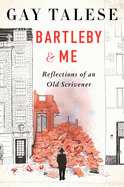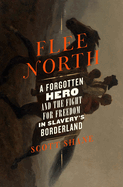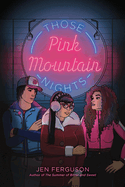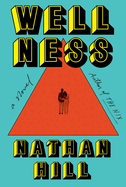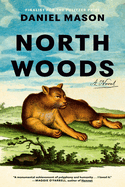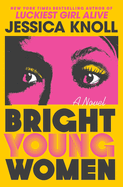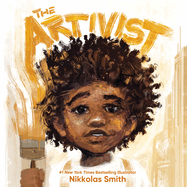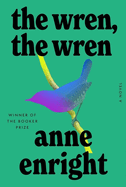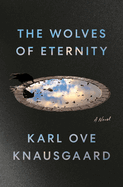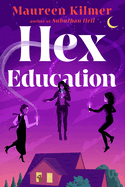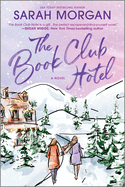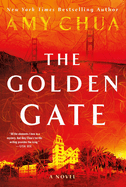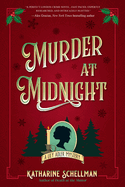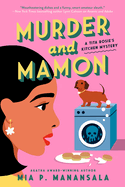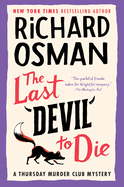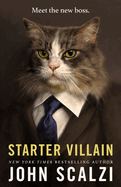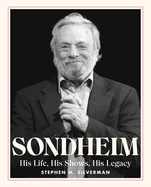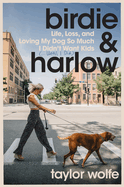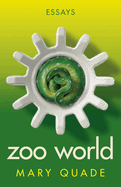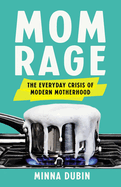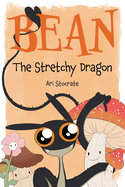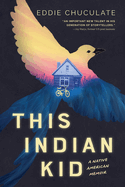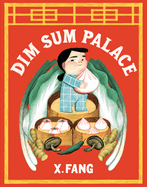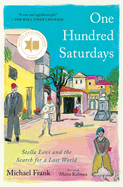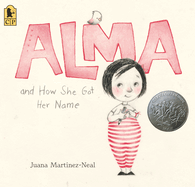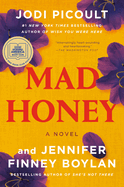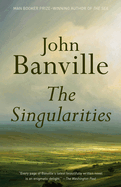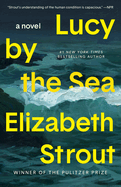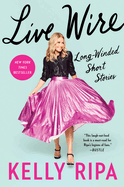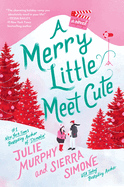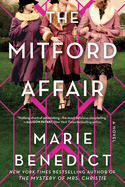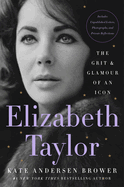Friday, September 22, 2023
We review a pair of star-worthy history titles this week: Bartleby and Me by Gay Talese, who takes readers from his days as copyboy at the New York Times to a Sinatra concert--three pieces in all, "written with painterly precision and respect for hard workers"; and Scott Shane's Flee North, the "riveting account" of Thomas Smallwood, a freedman who helped other enslaved people escape. Plus three teens fight the capitalist agenda and grieve a missing Indigenous girl, while slinging jokes and pizzas in the "incisive, intimately told" Those Pink Mountain Nights by Jen Ferguson. And so many more!
And don't miss The Writer's Life with Booker Prize-winner Anne Enright discussing how generations grapple with a family legacy in The Wren, the Wren (reviewed in this issue).
Wellness
by Nathan Hill
It's been seven years since the publication of Nathan Hill's first novel, The Nix, and anyone who loved that book will be delighted he's returned with equally expansive, audacious, and bighearted style in Wellness. In a novel that's both emotionally astute and deeply attuned to the 21st-century American zeitgeist, Hill also remains true to the imperative to tell a good story.
When photographer and artist Jack Baker and Elizabeth Augustine, who's committed to "studying the whole human condition," meet as first-year college students in Chicago in 1993, their improbably romantic origin story seems to set them on course for a life of relationship bliss. But by the time they've reached the 20th anniversary of their first encounter, they've hit the bottom of the U-shaped happiness curve identified by some economists and behavioral psychologists, and the sweetness of their young love has curdled into nagging dissatisfaction. They're married, with a behaviorally challenged eight-year-old son, sparring over the details of their "forever home"--a stylish condo in a "liberal, leafy, and loaded" suburb of Chicago--and mired in a sex life so unfulfilling that they're lured into investigating polyamory.
In excavating the roots of Jack's and Elizabeth's angst, Hill displays impressive virtuosity. The novel takes its title from the euphemistically named institute where Elizabeth, a psychologist, studies the power of placebos. With an ample supply of dramatic plot twists and a pair of protagonists who remain, even in their worst moments, deeply sympathetic, Wellness gives the lie to its character who says, "traditional storytelling is dying." In the hands of a writer as extravagantly gifted as Nathan Hill, it's very much alive. --Harvey Freedenberg, freelance reviewer
Discover: Blending a contemporary sensibility with traditional style, the extravagantly gifted Nathan Hill's second novel dissects the tensions of romantic relationships in midlife.
North Woods
by Daniel Mason
In his deliciously imaginative North Woods, Daniel Mason (A Registry of My Passage upon the Earth; The Piano Tuner) demonstrates that the story of a single plot of land and the people who inhabit it is a tale that's capable of containing multitudes.
Spanning a period from the middle of the 18th century to an indeterminate future when climate change has irrevocably altered the earth, North Woods focuses on a section of several hundred acres in rural Western Massachusetts first cultivated by Charles Osgood, an English veteran of the French and Indian War who believes "God had willed me to raise an orchard"--in his case one that magically springs from a remarkable source. He's a devoted apple farmer, and to house his family he erects a lemon-yellow New England saltbox on the property that becomes the foundational dwelling for those who live on this land over the ensuing centuries.
Beginning with Osgood and his fractious twin daughters, Mary and Alice, who maintain the orchard for more than four decades after their father's death, Mason fashions a parade of intriguing characters (including a handful of ghosts), who experience the full gamut of human life and emotion in this entrancing corner of the world. Near the end of North Woods, a character reflects that "the only way to understand the world as something other than a tale of loss is to see it as a tale of change." In this strange, enchanting, and memorable novel, Daniel Mason beautifully allows readers to experience that truth most profoundly. --Harvey Freedenberg, freelance reviewer
Discover: Through the history of one house and the people who inhabit it, Daniel Mason creates an extraordinary story that encompasses an entire world.
The Wren, the Wren
by Anne Enright
Anne Enright's astute eighth novel, The Wren, the Wren, traces the family legacies of talent and trauma through the generations descended from a famous Irish poet. Enright (The Forgotten Waltz) opens with Nell McDaragh, part of a "redundant generation" drifting through life after college. She writes posts for an online influencer and is in an on-again, off-again relationship with Felim. Aware of being the "last of the line" and fearing she's a disappointment, given the genetic gifts from her grandfather, celebrated lyric poet Phil McDaragh, she embarks on a round-the-world tour, writing a guide for fellow anxious travelers.
The novel switches between Nell's funny, self-deprecating narration and third-person vignettes about her mother, Carmel. She, too, has lived in the shadow of genius, her feelings toward her late father complicated by his leaving the family when she was 12. After Phil's death, Carmel ran a language school and became a single parent. The novel's title, also that of a poem Phil wrote for Carmel, centers the metaphor of a fragile, spirited creature. Examples of Phil's romanticized verse are dotted throughout; he also delivers a short first-person section idealizing his youth--a crush on his classmate Hanorah, serving as an altar boy, observing badger-baiting. He later exaggerated his hackneyed Irishness when he moved to the U.S. Cycles of abandonment and abuse characterize the McDaraghs. Enright convincingly pinpoints the narcissism and codependency behind their love-hate relationships ("our spiralling love--that doomed, glorious, ever-closer closeness") but compassionately posits the hope of restoration. --Rebecca Foster, freelance reviewer, proofreader and blogger at Bookish Beck
Discover: Anne Enright's eighth novel is an astute, compassionate portrait of three generations of an Irish family--the daughter and granddaughter of a famous poet--and their complicated relationships.
The Wolves of Eternity
by Karl Ove Knausgaard, transl. by Martin Aitken
Readers of the internationally acclaimed Norwegian author Karl Ove Knausgaard (My Struggle) will delight in The Wolves of Eternity, a novel translated from the Norwegian by Martin Aitken that spans the latter part of the 20th century and reaches into the present day. Nineteen-year-old Syvert returns home to his mother and Joar, his younger brother, after completing his military service. At loose ends, he begins to reflect on the death of his father (with whom he shares his name), who has started to appear in his and Joar's dreams. Syvert ultimately pieces together the fragments of his father's life, discovering that he was planning on leaving their family for his lover in the Soviet Union and, ultimately, that he'd fathered a child there. That child, Alevtina, a biologist, has lived her life devoid of curiosity about her biological father. Upon learning of their relationship, she and Syvert attempt to know each other and make sense of their own lives.
The narrative is shot through with the presence of death, the skirting of death, and the positing of the transcendence of death as seen through the elder Syvert's appearance in the dreams of his children and grandchildren; the obsession with anti-aging in the 21st century; and natural phenomena that seem to indicate a pause in the rhythms of death itself. The Wolves of Eternity is a marvelous and mysterious novel that will stay with readers long after Syvert and Alevtina take their leave of one another. --Elizabeth DeNoma, executive editor, DeNoma Literary Services, Seattle, Wash.
Discover: The Wolves of Eternity, a gripping, thought-provoking, and stirring novel, poses no lesser existential questions than the meaning of life and death.
Hex Education
by Maureen Kilmer
In Hex Education, Maureen Kilmer's witchy, wacky second novel, mother and real estate agent Sarah Nelson's past--and powers--finally catch up with her. It's been 20 years since the night of the fire that burned down Sarah's college dorm. Sarah and friends Katrina and Alicia have hidden a secret: their amateur coven was responsible for the blaze. All three have built successful lives around what they wished for that night: love for Sarah (happily married with twin teenagers), fortune for Katrina (a whip-smart entrepreneur), and fame for Alicia (a well-known magician). But when Madisyn, a zealous journalist, comes sniffing around for answers about the fire, and the three witches are reunited, their magic takes on a life of its own.
Kilmer (Suburban Hell) spins a highly enjoyable narrative that often hints at something darker. Although Sarah's magic usually goes wrong in humorous ways--her broom becomes self-sweeping, and her cat, Katy Purry, finds her (gravelly) human voice--Sarah knows it could quickly turn tragic again. Complicating matters is Sarah's prickly sister-in-law and former resident advisor, Nancy. Badly burned in the fire, she's a living reminder of Sarah's guilt. As Madisyn circles like a vulture, Sarah and her friends try various magical (and non-magical) strategies to keep both the journalist and the magic at bay--with mixed results. Hex Education, witty and entertaining, will beguile fans of Charmed or Bewitched, but it also asks deeper questions about magic, friendship, responsibility, and truth-telling. --Katie Noah Gibson, blogger at Cakes, Tea and Dreams
Discover: In her entertaining second novel, Maureen Kilmer spins a witchy, wacky narrative of magic (and friendship) gone wrong.
The Book Club Hotel
by Sarah Morgan
Sarah Morgan's charming Christmas novel, The Book Club Hotel, is an ode to the power of friendship and sure to appeal to anyone who loves the novels of Elin Hilderbrand or Jenny Colgan. Erica, Claudia, and Anna have been friends since they met in college 20 years ago. They convene their "Hotel Book Club" once a year: they stay in a hotel, talk about books, and enjoy spending time together, in spite of their many differences. But this year, as all three women face down their 40th birthdays, they find the year more fraught. Reserved businesswoman Erica is wondering if she's ready for a relationship for the first time ever; stay-at-home mom Anna is dreading empty-nest syndrome after her twins leave for college; and chef Claudia has been blindsided by her partner of 10 years leaving her. This year the three women have decided to stay at Vermont's Maple Sugar Inn, not knowing that their lives are about to be upended by meeting Hattie, the inn's unhappy young owner.
The Book Club Hotel is a perfect holiday read for those who love heartwarming stories. With themes of friendship and found family, Morgan (The Island Villa; The Summer Seekers; The Christmas Sisters) beautifully describes the midlife crises of these remarkably different women as they navigate the holiday season together. Readers will be rooting for Erica, Anna, Claudia, and Hattie each to get their Christmas wish. --Jessica Howard, freelance book reviewer
Discover: This heartwarming Christmas novel tells the stories of three middle-aged friends whose lives are forever changed after meeting a young hotel owner.
Mystery & Thriller
Bright Young Women
by Jessica Knoll
"We were twenty-one-year-old sorority girls; we screamed not because something was heinously, improbably wrong but because we had everything to be excited about." So muses Pamela, one of two narrators, in an opening chapter of Jessica Knoll's third novel, Bright Young Women, right before everything, indeed, goes wrong.
Why does the public often remember the names of criminals, but not their victims? Knoll shines a light on that injustice in this electrifying thriller, which deftly and compassionately gives voice to the people who lost their lives, and to those who loved them. Loosely based on the crimes of real-life serial killer Ted Bundy, this is the story of two young women from opposite ends of the country, Pamela Schumacher and Tina Cannon, who team up on a decades-long search for the truth. In one of the later chapters of the novel, mirroring what happened in Bundy's trial, a judge calls the defendant a "bright young man." Knoll chooses instead to tell the stories of the bright young women who were hurt by his crimes, thus robbing Bundy of some of his undeserved myth of exceptionalism.
This is a tale of courage and resilience, with evocative scenes and multidimensional characters. Knoll (The Favorite Sister; Luckiest Girl Alive) has written not only a propulsive crime novel that will keep readers riveted late into the night, but also a scathing indictment of the often-flawed justice system. --Grace Rajendran, freelance reviewer and literary events producer
Discover: Bright Young Women is an electrifying thriller that changes the narrative about one of America's most infamous serial killers.
The Golden Gate
by Amy Chua
The Golden Gate transports readers back to 1940s San Francisco with a well-plotted and clever whodunit that pits a tough-guy murder detective against one of the city's wealthiest families. It's a story that sheds light on the many ways that race and class play into the history of the West Coast town and the United States judicial system writ large.
Detective Al Sullivan is enjoying a drink with a pretty girl at the upscale Claremont Hotel when he's told there's been a murder upstairs in one of the guest rooms. The victim proves to be none other than a much-maligned presidential candidate with a laundry list of enemies in town. One of the suspects turns out to be the girl Sullivan had been out on the town with that same evening, also a member of the Bainbridge family, part of San Francisco's elite. As clues lead Sullivan to believe that the murder of the politician is connected to the unexplained death of one of the young Bainbridge daughters a decade earlier, he finds himself caught up in a murky, tangled investigation full of twists and turns.
Amy Chua (Battle Hymn of the Tiger Mother) brings a keen eye for historical detail to her debut novel, filling The Golden Gate with trivia about San Francisco's growth as a port and then a bustling well-to-do city, as rife with elements of racism and classism as elsewhere in the U.S. Within this historical context, Chua skillfully draws in elements of classic noir fiction, making The Golden Gate a stunning first novel. --Kerry McHugh, freelance reviewer
Discover: A well-plotted and clever whodunit from the author of Battle Hymn of the Tiger Mother pits a tough-guy detective against one of San Francisco's wealthiest families.
Murder at Midnight
by Katharine Schellman
Katharine Schellman's Murder at Midnight, the fourth Lily Adler mystery, finds her keen-eyed protagonist trapped at an impromptu Hertfordshire house party after a snowstorm. When a fellow guest is found murdered and Amelia, the sister of her friend Jack, is implicated, Lily assists her brother-in-law (the local magistrate) with an investigation. Schellman (The Last Drop of Hemlock; Last Call at the Nightingale) delves into issues of gender, race, reputation, and honor in Regency-era England. Lily, a white English widow, knows her word carries more weight than that of Amelia, who is younger, unmarried, and Anglo-Indian. Amelia's parents, also present, are forced to tread a fine line as they deal with their neighbors' prejudice, and fear for their daughter's safety. Gregory Edison, the murdered man, was a known gambler and blackmailer, but did Amelia--or someone else--want him dead? Lily, applying the skills she has learned in solving three previous cases, delves discreetly (and sometimes not so discreetly) into her neighbors' lives to find out.
Schellman's narrative is filled with detailed descriptions of the period in which the novel is set--the finer points of afternoon tea; the valuable jewelry; the housekeeper, Mrs. Reynaud, tallying the linens. Lily's relationships with various men--her brother-in-law, John; her sometime paramour, Matthew; and Jack, her longtime friend--are nuanced and complex, if sometimes restricted by the laws of propriety. As time drags on and tensions build among the guests, the narrative slows a bit, but Schellman eventually brings her case and her characters to a satisfying conclusion. Fans of strong-minded female sleuths and layered historical fiction will enjoy Lily's fourth adventure. --Katie Noah Gibson, blogger at Cakes, Tea and Dreams
Discover: In her fourth adventure, wealthy English widow Lily Adler solves a case involving murder, blackmail, and other secrets at a snowbound house party.
Murder and Mamon
by Mia P. Manansala
Mia P. Manansala whips up another delicious Filipina American foodie mystery in Murder and Mamon, her fourth adventure in the Tita Rosie's Kitchen Mystery series, featuring baker and amateur sleuth Lila Macapagal. As spring arrives in Shady Palms, Ill., Lila's three ninangs (godmothers)--April, Mae, and June, whom she calls the "Calendar Crew"--are preparing to open their own laundromat. But before their grand opening, the ladies are shocked to find a dead body in the building--plus some graffiti that makes Lila wonder if her ninangs' gossiping habit has caught up to them at last.
Manansala (Blackmail and Bibingka; Homicide and Halo-Halo; Arsenic and Adobo) brings back her diverse, bighearted cast of Lila's family and friends, including Lila's warm-and-fuzzy Tita Rosie; Rosie's formerly-no-good son, Ronnie; and Lila's business partners at the Brew-ha Café, Elena and Adeena. Everyone pitches in to comfort the ninangs and solve the case. Even Lila's dentist boyfriend, Jae, reluctantly lends a hand. Manansala peppers her narrative with Tagalog words, mouthwatering descriptions of Tita Rosie's Filipino feasts, and the Brew-ha's twists on café classics, including the titular mamon (a chiffon cake). During her investigation, Lila considers the damaging effects of her ninangs' sharp tongues, while also delving into an underground gambling ring; a scandal involving Ninang April's visiting niece, Divina; and--most dangerous of all--a longstanding feud between church ladies of a certain age. Witty and well-plotted, Manansala's fourth mystery is satisfying with a few twists, just like the ninangs' juicy gossip or a batch of Lila's pandan cheesecake brownies. Lovers of cozy mysteries, clever female sleuths, and baked goods will enjoy every bite. --Katie Noah Gibson, blogger at Cakes, Tea and Dreams
Discover: Mia P. Manansala's zesty fourth novel combines a new laundromat, local gossip, delectable baked goods, and a well-plotted mystery.
The Last Devil to Die
by Richard Osman
Richard Osman (The Bullet that Missed; The Thursday Murder Club) revisits the septuagenarian members of the Thursday Murder Club and some of their new friends in The Last Devil to Die. Incredibly clever, with some deeply poignant scenes and laugh-out-loud shenanigans from the elderly friends, this fourth entry in the series is chaotically fun. The four friends--Elizabeth, a brilliant former spy; Joyce, a chatty retired nurse; Ibrahim, a gentle psychiatrist; and Ron, a pugnacious unionist--are supposed to be enjoying life in their English retirement village. But they can't help themselves: when an antique dealer named Kuldesh--an old friend of Stephen, Elizabeth's husband--is found murdered in his car, they have to get involved. As the Thursday Murder Club members dig into the area's antique trade, they discover all kinds of shady things going on--and soon realize that almost no one can be trusted. The intrepid friends face their own mortality in the wake of Kuldesh's murder in a story that is sweet, sad, and incredibly entertaining.
Polish gangsters, irritated cops, Canadian killers, and all sorts of other characters all find themselves stymied by the Thursday Murder Club's inexplicable success. Osman weaves numerous plot lines, both tragic and hilarious, into an irresistible novel, perfect for fans of Mrs. Pollifax or Miss Marple. Although those who have read the first three novels in the series are sure to appreciate learning more about the early lives of Joyce, Ron, Ibrahim, and Elizabeth, The Last Devil to Die could be read as a delightful standalone. --Jessica Howard, freelance book reviewer
Discover: The Last Devil to Die is a hilarious addition to the Thursday Murder Club series featuring four clever retirees.
Science Fiction & Fantasy
Starter Villain
by John Scalzi
There's no loyalty among thieves or supervillains in Starter Villain, the laugh-out-loud science fiction comedy from John Scalzi (The Kaiju Preservation Society; The Last Emperox; The End of All Things). Charlie's life has hit a wall. He's a divorced journalist-turned-substitute teacher, living in a house owned by his late father's estate, and has hopes to buy the local pub. But he can't put the house up for collateral on a loan without the agreement of his half-siblings, who would rather sell it. Then his estranged Uncle Jake dies, and what initially seems like a small provision in the will to reward him for representing the family at the funeral turns out to be much more. Besides the parking-structure empire via which Jake allegedly made his billions, he had a thriving supervillain business, and Charlie has inherited it all. That includes a feud with a band of villainous competitors.
Starter Villain is one of Scalzi's lighter works, as evident by the premise. There is the occasional pointed jab at the nefarious and frequently incompetent nature of billionaires as a class, but things like talking dolphins who go on strike and discussions of the logistics of throwing somebody into a volcano make for a summer blockbuster action-comedy of a novel. The genetically enhanced cats employed as spies and trained in typing are particularly delightful, especially when it comes to Charlie's bond with Hera, whom he unwittingly took in as a stray. Fans of Scalzi's more comedic novels will find this to be everything they could want. --Kristen Allen-Vogel, information services librarian at Dayton Metro Library
Discover: A new supervillain finds himself dumped straight into the deep end of the business in John Scalzi's lighthearted romp through the spy-adventure genre.
Biography & Memoir
When My Ghost Sings: A Memoir of Stroke, Recovery, and Transformation
by Tara Sidhoo Fraser
Vancouver, Canada-based Tara Sidhoo Fraser's lyrical debut, When My Ghost Sings, is an experimental literary recounting of the experience of undergoing a stroke and relearning daily skills while supporting a gender-transitioning partner. In November 2014, Fraser, age 32, suffered a brain bleed caused by an arteriovenous malformation, or AVM. Doctors deemed the AVM inoperable because of its size, so an embolization was performed instead.
Those are the facts, presented in a few paragraphs in the introduction. The remainder of the memoir, however, is often deliberately hazy and dream-like in an effort to mimic her disorientation. In fact, Fraser splits herself into two characters: the "I," moving through life, and "Ghost," her memory repository. Ghost is impish and stubborn, wanting everything to remain exactly the same. But "I can't rely only on Ghost's mental postcards," Fraser thinks, and so she sets out to retrieve evidence of who she was and is. This involves finding "the boy," her former partner, who accompanied her to the hospital and during her early recovery. Like her current fiancé, Jude, he had hormone shots to begin a gender transition; those journeys play out in parallel.
Fraser's search for herself, and her partners' determination to be true to who they are, take on the epic dimensions of Greek mythology. This is a heroine's quest, unfolding mostly on Vancouver Island and in Seattle. Scenes are built around echoes and contradictions of the past. Set in the wake of medical catastrophe, this is a startling memoir about queer identity and laying the ghosts of the past to rest. --Rebecca Foster, freelance reviewer, proofreader and blogger at Bookish Beck
Discover: When My Ghost Sings is a strikingly lyrical debut memoir about undergoing a stroke and relearning daily skills while supporting a gender-transitioning partner.
Move Like Water: My Story of the Sea
by Hannah Stowe
In the closing pages of her memoir, Move Like Water, scientist and sailor Hannah Stowe explains: "My aim with this book was to give you an ocean to hold in your hands, no matter how far from the waters you find yourself." Stowe presents a hybrid text--part memoir and part ecological treatise, perfect for fans of Annie Dillard or Elisabeth Tova Bailey. Each chapter is named for a creature of or dependent upon the sea and is accompanied by the author's evocative illustrations. In a chapter called "Human," Stowe describes a disastrous surfing outing that resulted in a significant back injury. Hampered by chronic pain, Stowe was forced to learn a new kind of resilience and, after months of struggle and recovery, she was able to return to sailing, this time on a boat of her own, which she named Brave.
The opening essay, "Fire Crow," focuses on her coastal upbringing in Pembrokeshire. Stowe was filled with longing: "I wanted to explore, to fill the edges of my mind with the edges of the world, to come back with a hundred answers and a thousand more questions." In "Sperm Whale," she highlights the matriarchal society of those majestic creatures, while tracing her own powerful matrilineage. Though there are some inconsistencies, Stowe is at her descriptive best when sharing her deep knowledge of and passion for the ocean, inspiring her readers to remember that the oceans "belong to all of us, and so does the care they require." --Sara Beth West, freelance reviewer and librarian
Discover: Hannah Stowe's debut memoir, Move Like Water, is a beautiful meditation on the power and fragility of the ocean and the responsibility we hold to care for it.
Sondheim: His Life, His Shows, His Legacy
by Stephen M. Silverman
Plenty of books celebrate the genius of Stephen Sondheim, the greatest composer and lyricist in Broadway history, but one that is sure to be catnip to his legions of fans is Sondheim: His Life, His Shows, His Legacy by Stephen M. Silverman (the author died two months before this book's publication). Sondheim aficionados likely already know everything in this work, but it's so generous and handsomely illustrated--with production stills, set designs, costume sketches, analyses of Sondheim's musicals, insider gossip, and more--that fans will savor it. Aside from Sondheim's own exceptional books, Finishing the Hat and Look, I Made a Hat, this may be the best coffee-table volume devoted to his work.
Silverman (The Amusement Park) takes readers on a linear trip through Sondheim's life and career. He starts with his upbringing as the only child of "absentee working parents," including his social-climbing mother. He also writes about Sondheim's good fortune to have been mentored by Oscar Hammerstein II, who told him, "Write what you believe, and you'll be ninety-nine percent ahead of the game"; his 1950s work writing scripts for television's Topper; and his partnerships writing lyrics for the scores by Leonard Bernstein for West Side Story in 1957 and Jule Styne for Gypsy in 1959. Silverman captures Sondheim's extraordinary run of musicals as composer and lyricist, including Company, Follies, A Little Night Music ("that wonderful combination: a prestige hit with commercial chops"), Pacific Overtures, and his masterpiece, Sweeney Todd. Sondheim fans: make room on the coffee table for this one. --Michael Magras, freelance book reviewer
Discover: In Stephen M. Silverman's final book, a handsome volume filled with photos, production stills, set designs, and descriptions of his musicals, he celebrates the career of Stephen Sondheim.
Birdie & Harlow: Life, Loss, and Loving My Dog So Much I Didn't Want Kids (...Until I Did)
by Taylor Wolfe
Birdie & Harlow, the first book by blogger Taylor "Tay" Wolfe, is an adventurous memoir filled with bittersweet stories about how Harlow, a much beloved dog, accompanied the author and her husband over 10 years of ups and downs on the way to becoming the parents of their daughter, Birdie.
When Wolfe--eccentric, inherently rebellious, and restless by nature--was in her 20s, she held tightly to the belief that she "wasn't a 'baby person.' " While struggling to find her place in the world, she decided to buy her boyfriend, Chris, a Hungarian vizsla puppy for their two-year dating anniversary. The puppy instantly bonded with Wolfe, who named him Harlow. The dog brought "permanence" to Wolfe's love for Chris as the two went on to marry, move several times, and start a family when they were in their 30s.
Wolfe's spirited narrative traces experiences shared while the couple spent time with sensitive, manipulative, mischievous, and energetic yet adoring Harlow. The trio moved to Chicago, where Wolfe spent many years trying to find her professional niche. She turned her focus to writing--maintaining a blog, The Daily Tay, which humorously documented her life experiences, the lovable antics of Harlow, and ultimately led to her launching a graphic T-shirt and sweatshirt line.
This fun, briskly paced memoir takes a more serious turn when Wolfe shares details about the many heart-wrenching challenges she and Chris faced on the bumpy road to parenthood. Wolfe, however, doesn't dwell or wallow in self-pity. The buoyancy of Wolfe's warm, witty storytelling will have readers tearing up one minute and laughing the next. --Kathleen Gerard, blogger at Reading Between the Lines
Discover: Birdie & Harlow is a lively, spirited memoir about how a dog named Harlow rallied a young couple who faced many challenges on the way to parenthood.
History
Bartleby and Me: Reflections of an Old Scrivener
by Gay Talese
Gay Talese (High Notes), a pioneer of literary journalism, has long been beguiled by character, as he has proven across decades of writing. Bartleby and Me: Reflections of an Old Scrivener is a three-part this-and-that victory lap showcasing Talese's worthwhile specialty: writing about unsung people. The book's title is a reference to "Bartleby, the Scrivener," what he calls Herman Melville's "great short story about a nobody," and Talese borrows Melville's subtitle, "A Story of Wall Street," for the first offering in Bartleby and Me. The piece focuses on the Bartlebys that Talese observed at the New York Times, where he began his career as a 21-year-old copyboy in 1953. The book's second piece, "In Sinatra's Shadow," is the story behind "Frank Sinatra Has a Cold," Talese's canonized 1966 Esquire article. His subject--both here and in 1966--isn't Sinatra so much as the people around him. The book's third offering, "Dr. Bartha's Brownstone," is about what led a successful Romania-born physician to literally blow up his Manhattan home, and himself with it, in 2006. This being a Talese story, it's also about the people who were in Bartha's orbit and part of the brownstone's history and post-explosion fate.
All three pieces are written with painterly precision and respect for hard workers. Talese's own working-class roots surely had a hand in nurturing his lifelong democratizing impulse, which he calls "my reporting on the lives of non-newsworthy people: doormen, bootblacks, dog walkers, scissor grinders...." The list continues, and it's readers' good fortune that Talese does too. --Nell Beram, author and freelance writer
Discover: Bartleby and Me is a three-part this-and-that victory lap in which longtime journalist Gay Talese showcases his worthwhile specialty: writing about unsung people.
Flee North: A Forgotten Hero and the Fight for Freedom in Slavery's Borderland
by Scott Shane
In Flee North: A Forgotten Hero and the Fight for Freedom in Slavery's Borderland, Scott Shane (Objective Troy; Dismantling Utopia) tells the story of the man who led hundreds along the underground railroad and the first--in a letter published in 1842--to call it by that name in print. (The letter "marked a signal moment in the history of both the American battle against slavery and the American language.") Thomas Smallwood, born into slavery in Maryland, was in the rare position of being able to purchase his freedom from an enslaver who first ensured he was taught to read and to write, and then fulfilled a pledge to manumit him when he turned 30. Smallwood lived and worked quietly for a decade as a shoemaker in Washington, D.C. Although his own journey to freedom did not begin with an escape to the northern states, Smallwood reached out to white activist Charles Torrey and formed a partnership that would actively encourage and aid hundreds in fleeing slavery, often taking whole carriage-loads of families at a time. All the while, Smallwood wrote biting satirical articles for the newspapers in which he mocked the slave traders and slave catchers his charges eluded.
Using Smallwood's newspaper columns, his memoirs, and other contemporaneous documents, Shane builds a convincing case that history unjustly erased Smallwood and left the spotlight on Torrey alone. Readers will find this riveting account an excellent step toward restoring to Smallwood the place in public memory he richly deserves. --Kristen Allen-Vogel, information services librarian at Dayton Metro Library
Discover: A hero who fought slavery with words as well as deeds rightfully takes center stage in this riveting account of formerly enslaved Thomas Smallwood.
Essays & Criticism
Zoo World
by Mary Quade
Poet and creative writing professor Mary Quade (Local Extinctions) won the Non/Fiction Prize from the Journal literary magazine for her third book, Zoo World. Quade explores the interconnectedness of life and conservation strategies in these 15 thoughtful nature and travel essays, which exemplify compassion for people and, particularly, animals. The collection makes a round-trip journey, beginning at Quade's Ohio farm and venturing further afield in the Americas and to Southeast Asia before returning home. The opening piece, "Hatch," juxtaposes her ducklings' fragility with the aftermath of an oil spill to pose probing questions about human responsibility. Often, alternating segments have a personal experience running in parallel to an environmental or societal issue; "In the Classroom" compares a former school in Cambodia--once a Khmer Rouge prison and interrogation center and now a genocide museum--with the spate of U.S. school shootings, including one in the author's area.
The title essay considers conditions in zoos in Vietnam and elsewhere, and ponders notions of human dominion and animals as "ambassadors." "In Harmony with Nature" examines dairy-industry marketing, and wonders what it might mean to truly live in concord with the natural world. The overall standout, "Project Monarch," investigates the species' 85% decline, contrasting outside research with Indigenous knowledge of their Mexican wintering grounds. A past vs. present structure illustrates improvement, as in "The Galápagos Shooting Gallery" (tourists now employ cameras rather than guns), or laments a lack of progress, as in "Songs of the Humpback Whale." These passionate, nuanced environmentalist essays are perfect for Barbara Kingsolver fans. --Rebecca Foster, freelance reviewer, proofreader and blogger at Bookish Beck
Discover: A collection of 15 thoughtful nature and travel essays explores the interconnectedness of life and exemplifies compassion for other people and, particularly, non-human animals.
Parenting & Family
Mom Rage: The Everyday Crisis of Modern Motherhood
by Minna Dubin
Considering why mothers often feel a rage "so hot it is blinding," Minna Dubin wonders: "What if we were normal mothers reacting to unjust circumstances? What if mom rage were a widespread, culturally created phenomenon, and not just personal problem?" These questions, prompted by her own experience, resulted in a 2020 essay she wrote for the New York Times, which she expanded into the full-length Mom Rage. Using additional research and critique, Mom Rage moves between the contextual and the individual, exploring the oft-hidden rage that many experience alongside motherhood. Dubin focuses first on the broader context in which mothers operate, then zooms in to the individual, exploring the physiological and psychological causes. She offers suggestions for individuals seeking to navigate their own anger before zooming back out to consider systemic solutions to the same. This combined micro and macro view of the issue veers Mom Rage well away from any risk of victim-blaming; Dubin works overtime across these pages to dispel the myths that "conflate women's anger with harm," especially when considered in the context of race and culture.
Drawing on years of interviews with parents across the globe, of varying backgrounds, races, cultures, sexualities, and family structures, Mom Rage is a searing indictment of the failed systems of support and flawed narratives that too often surround parenthood. Dubin calls Mom Rage a "rebellion against the supremacy of the googly-eyed, cooing narrative, and the way it silences moms by erasing the harder parts of modern motherhood." It is bound to resonate with any woman who has experienced the shift to motherhood as anything less than perfect. --Kerry McHugh, freelance writer
Discover: Mom Rage is a searing indictment of the failed systems and flawed narratives that result in maternal anger being viewed as a personal failing, rather than a larger problem to be addressed.
Children's & Young Adult
Those Pink Mountain Nights
by Jen Ferguson
Three teens fight the capitalist agenda, grieve a missing Indigenous girl, and navigate friendship while slinging jokes and pizzas in the incisive, intimately told Those Pink Mountain Nights by Jen Ferguson (The Summer of Bitter and Sweet).
While working at Pink Mountain Pizza (PMP) in Alberta, Canada, Métis 17-year-old Berlin ("Bee") Chambers thinks she spots Kiki Cheyanne Sound, a missing Cree schoolmate. But Bee, usually "firing on all cylinders," isn't sure; she hasn't been sleeping, hasn't been caring. When her boss announces the next day that he is selling PMP to franchisers, Bee rages, vowing to prevent its corporate slaughter.
Jessie is white and doesn't want her father, who already owns half the province, purchasing PMP, either. Her new "messy, excellent" workplace is both a location to flirt with crush Bee and part of her "grand escape"; though her father sees her as his "investment," she wants to leave home and become a welder. Cam, PMP's only full-time employee, dropped out of school to help care for his sisters. He's worried that Bee could meet the same fate as his cousin, Kiki, and wants to help her. Together, maybe their hurt over Kiki can heal. Maybe they can save PMP.
Ferguson's stirring narrative from multiple points of view features a friendship breakup, a manifestation of depression as perfectionism, and racism in the "corrupt colonial country of Canada." Cam, who is Cree, fears his sisters will disappear because "it was what happened to Native women and girls. To Two-Spirit people." Achingly stunning prose, "absolute mischief," and exhilarating kisses compel a fast read. --Samantha Zaboski, freelance editor and reviewer
Discover: Three teens fight the capitalist agenda, grieve a missing Indigenous girl, and navigate friendship while slinging jokes and pizzas in this incisive, intimately told multi-POV story.
The Artivist
by Nikkolas Smith
Activist and artist Nikkolas Smith (The 1619 Project illustrator) tells an approximation of his own story through a child narrator in the motivating, moving, and passionately illustrated The Artivist.
A child with natural hair and skin shaded in browns and golds is Smith's picture-book proxy. The child loves to paint (artist) and help their community (activist), "But sometimes the world that I see is not the world that I wish to see." The protagonist decides to combine both parts of their identity "to take ACTION with my ART." They change one letter on an eviction sign--turning "MOVE TODAY" into "LOVE TODAY"--and the mural goes viral. The protagonist, speaking directly to readers, notes that anyone can be an "Artivist." An Artivist inspires, is an ally, a planet protector, and a memory keeper, and is "brave enough to speak up, even when it is scary."
Smith uses simple, evocative language to create the book's structure and dynamic, emotional art to complete the story. Powerful digital illustrations with textured details depict the Artivist's experience, like the huge purple monster that is a "larger than life" problem. Incarcerated people stare through bars in the monster's trunk; "U.S. vs THEM" is written across the neck; the monster's scales are smokestacks; and gluey, viscous tendrils hold the protagonist captive. Every image creatively depicts what the Artivist is up against: racism, gun violence, gentrification, pollution, injustice, war, hate. Ultimately, liquid golds and sparkling greens overtake the heavy blues and purples as the child begins to be the change they so desire to see. --Hadeal Salamah, blogger, librarian, freelance reviewer
Discover: Activist and artist Nikkolas Smith tells an approximation of his own story through a child narrator in this motivating, moving, and passionately illustrated picture book.
Bean the Stretchy Dragon
by Ari Stocrate
Playful, visually punny Bean the Stretchy Dragon is an energetic debut graphic novel for young readers from popular French comic artist Ari Stocrate.
Every day is "an adventure" for cheery Bean, a tiny black dragon with a tan belly and big orange eyes who lives with his witch caretaker, Sally, in the swamp. Today, Bean wakes up with a good, long stretch, takes in the "nice view," and tumbles (literally) downstairs. Next, it's time for her favorite breakfast--beans (cans and cans of them)--followed by an "after-meal snack" of zombie tibia. Bean then heads through the swamp and into the forest to bury the bone in a pit with the rest of her treasures. When "something more interesting comes along," Bean is off in pursuit of a baby jackelope... until its much-larger mom puts an end to Bean's fun.
Stocrate's winsome graphic novel is adapted from her popular web comic "Sally & Bean." Endearing, childlike main character Bean (inspired by the artist's own pets, a cat and two lizards) can usually be found digging, racing, chasing, or swooshing, and spends the entire book getting into amusing and messy trouble. Page turns sustain the action, and the dawn-to-dusk narrative is interspersed with entertaining illustrations of the "truly magical" beings that inhabit the neighborhood. Throughout this nimble, kid-friendly offering, Stocrate's storytelling makes the most of the visual nature of her format, and this--along with an ever-present sense of humor--allows her to deliver a dynamic and accessible early graphic novel. --Lynn Becker, reviewer, blogger, and children's book author
Discover: Ari Stocrate's playful, visually punny debut graphic novel for young readers is adapted from her popular web comic "Sally & Bean."
This Indian Kid: A Native American Memoir
by Eddie Chuculate
Readers will find a bittersweet dose of 1970s nostalgia as well as a timeless depiction of the intersection of identity and self in This Indian Kid, a candid, clear-eyed memoir from Eddie Chuculate, who is enrolled Muscogee (Creek) and of Cherokee descent.
The loosely connected stories detail a youth spent mainly in smalltown Muskogee, Okla., with his extended family and childhood friends. Young Eddie frequently moved in and out of town as his mother and stepfather's on-again, off-again relationship fluctuated. His memories are largely warm, downhome stories of fishing, playing baseball, and developing his love of writing. The narrative opens with a story from Eddie's sixth-grade Christmas vacation, when he and his best friend Lonnie, a Black boy, go rabbit hunting. The hunt goes awry when Lonnie steps onto a frozen pond and "the ice cracked and spider-webbed in long veins." Eddie saves Lonnie by using his BB gun to help him climb out of the water, setting the tone for a series of memories in which life shifts, but the support of family and friends restores balance.
Chuculate's memoir is notable for portraying an Indigenous childhood rooted in community rather than trauma. Reading the snapshots of his life feels like making a new friend. Although this intimate look at growing up in rural America takes place in a lost, pre-Internet world, Chuculate's spare, graceful prose and the included childhood photos should give teen readers a relatable entry point to this inspiring slice-of-life that gently reckons with race and identity. --Jaclyn Fulwood, youth experience manager, Dayton Metro Library
Discover: This memoir of growing up Native American in 1970s smalltown Oklahoma is a candid, inspiring love letter to family and community.
Dim Sum Palace
by X. Fang
Visual artist X. Fang makes her picture book debut with the toothsome Dim Sum Palace, "inspired by childhood memories of epic dim sum feasts." Her inviting endpapers feature delectable sketches of the tastiest treats, whetting appetites for the royal culinary adventure within.
"Liddy was excited for bedtime, because the next day her family was going to the Dim Sum Palace." Liddy wants to know if it's a real palace with a real empress. Her mother's reply of "You'll just have to wait and see" keeps Liddy awake. When a "delicious smell waft[s] into her room," she must (of course) follow the aromatic trail, eventually reaching a humongous palace kitchen in the midst of oversized dim sum prep. Liddy inadvertently falls into a bowl and gets molded into a dumpling meant for a "very hungry" Empress. Luckily, Liddy's yell--"I'm NOT a dumpling! I'm a little girl!"--halts the Empress's chopsticks.
Every page emanates exuberant energy via Fang's stylized graphite and digitally colored illustrations. Liddy, standing on her bed, immediately takes a superhero stance, announcing she's utterly invincible. Being little never holds her back, as she climbs up bamboo steamers and uses bok choy as a convenient step. Even in the face of possible danger, as she's tossed and turned into dumpling filling, she's more annoyed than frightened.
When Liddy finally gets to the real Dim Sum Palace (a restaurant), Fang ensures it's full of appreciative eaters of all backgrounds, everyone sharing joyful nourishment with family and friends. --Terry Hong, BookDragon
Discover: In X. Fang's delicious Dim Sum Palace, brave Liddy gets rolled into a royal dumpling, but easily survives to savor dim sum treats that "tasted better than in her wildest dreams."
New in Paperback
The Writer's Life
Anne Enright: The Damage Lessens with Each Generation
_hugh_chaloner.jpeg) |
|
| (photo: Hugh Chaloner) | |
Anne Enright is the author of eight novels, two short story collections, and a memoir of motherhood. She was the first Laureate for Irish Fiction (2015–2018), and won the Man Booker Prize for The Gathering in 2007. She is also a professor of creative writing at University College Dublin. The Wren, the Wren (reviewed in this issue), a novel about the generations descended from Irish poet Phil McDaragh, bears her hallmark themes of family legacy and creativity.
We're seeing a real flourishing of Irish writing--this year's Booker Prize longlist, 'the Sally Rooney effect.' Do you see Irish writers as a sort of literary vanguard? Or has it ever been thus, and the world only realizes it occasionally?
The world realizes how flourishing the Irish literary scene is about every five minutes, and it's like no one can figure it out--is it something in the water? A culture is like an ecosystem; it is hard to say what one factor makes it work so well. When I came of age, earnings from fiction were completely tax-free, so that was certainly encouraging. But actually, if you are a smart young person in Ireland, you see people winning prizes and whatever else gets the press excited, and you think quietly to yourself, "Someday, that is going to be me." Then, in your early 20s, you walk into a launch in a bookshop in Dublin, and the writers are not just on the shelves, they are in the room. It is profoundly exciting. It is a fun place to be.
Did you have particular poets in mind as you were crafting Phil McDaragh's verse? (Seamus Heaney? Michael Longley?)
Phil is 15 years older than Heaney or Longley, and he wrote before the amazing flowering of Northern Irish poets that happened in the 1970s. So, no, not those two--and besides, I would not dare! Though a lesser talent, Phil had some of the same influences as they did: medieval Irish verse is important to him, as are Paddy Kavanagh, Austin Clarke, and Padraic Colum. Michael Hartnett is in there, especially his translations from the Irish, and I used a sprinkling of Louis MacNeice in satirical mode. Phil shares my love of John Donne, which would be unusual perhaps for an Irish lyric poet. He is, however, completely himself. I found him very easy to access as a character, but his poetry was amazingly hard to write (I suspect he found it difficult, too).
Carmel thinks of Phil: "He had a self-important heart. Confidence? Was that all it took? Surely here was some extra stupidity required." Is the narcissistic artist a specifically male type? (cf. Monsters by Claire Dederer).
Some artists are lovely, modest people--warm, empathetic, good to their mothers, nice to their children--and some are monsters. What they all share is a sense that their work is necessary: it is something they need to do, and they think other people might want to see it. For someone like Carmel, that's a fairly astonishing claim to make on the world's attention. You can call it narcissism if you like; she certainly would.
But here's my theory about all that: a person's narcissism expands to fill the available space. We let men get away with being monstrous, in ways that are quashed in women from their earliest days. Sometimes, we expect male monstrousness: we admire and reward it. So I would not gender either art or monstrousness--society plays a role, too.
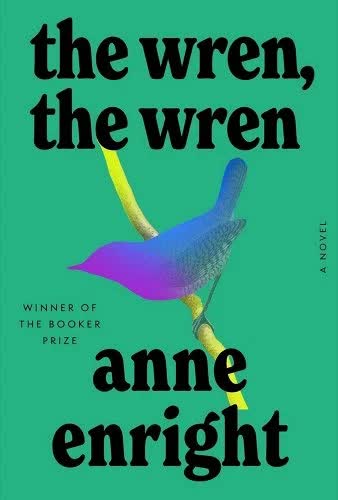 I found Nell an utterly convincing mouthpiece for the preoccupations, wit, and ennui of today's young people. How did you go about tapping into a modern sensibility to create her voice?
I found Nell an utterly convincing mouthpiece for the preoccupations, wit, and ennui of today's young people. How did you go about tapping into a modern sensibility to create her voice?
I suppose I went online. I teach and I have children, so young people are not a mystery to me. But actually, the secret answer is that I went back to my own early work. I tapped into the modernist sensibility at play in my first short stories, which I wrote in my 20s. Nell's interaction with her period app, for example, is very close to work I did about women and modernity, women and television, women and machines.
There's a striking moment when Nell is at the top of the Utrecht cathedral tower and is overtaken by a conjunction of beauty and fear that she identifies as awe. Is this a depiction of Stendhal syndrome? What did you intend with this scene?
I had to look this up! Stendhal syndrome is a kind of panic attack suffered in the presence of great art. It reminds me of the ecstatic response some Romantic artists had to landscape. Way back in 1757, the Irish philosopher Edmund Burke talked about the sublime as having the power to compel and destroy us--beauty is calming, but the sublime is agitating. Nell is not a religious person (she does not belong to any tradition), but she is interested in the existence of what she calls a higher form of consciousness. Going up the spiral staircase of the church tower, she suffers a mixture of claustrophobia and vertigo, and she has a panic attack that ends with a feeling of revelation. Nell discovers the sublime. I don't want to be too literal, but this mixture of ecstasy and fear is a tiny bit like the feeling she had in bed with her abusive lover, Felim. So the experience of the tower releases her from that dependency, somehow.
The McDaragh family seems to be caught in cycles of damage. I wondered if there might also be an environmental parable in their psychology: greed and self-importance versus love and dependence. How do we get trapped in these patterns?
I think the damage gets less with each generation, so it's not a cycle, it's a kind of spiraling outwards towards better, easier times. The first rupture is the loss of Carmel's father, Phil; that is the trauma that takes time to heal. I am not sure there is a parable there about dependence. Carmel and Nell love each other absolutely, as Nell says, but that doesn't make for happiness, at least not in the short term. I was about to protest that I don't write parables, but then realized how much I was influenced by the story of Martha and Mary in the New Testament. Carmel gets to tend and fret--she is the Martha generation. On either side, her father and her daughter have adventures: they get to believe, imagine, be passionate; they have the luxury of making mistakes, they allow themselves to blunder around. --Rebecca Foster, freelance reviewer, proofreader and blogger at Bookish Beck
Book Candy
Book Candy
Patti Smith reads Sylvia Plath's poem, "The Moon and the Yew Tree," courtesy of Open Culture.
---
Decision fatigue and jawn are among the many new terms and meanings just added to Dictionary.com.
---
Guardian cartoonist Tom Gauld "watches Goldilocks pick her next book to read."
---
"From the Bergen Public Library Norway, a collection of antique book patterns from front or end papers. The books in question are from 1890-1930." (via Kottke.org)
Rediscover
Rediscover: Gita Mehta
 Gita Mehta, the Indian and American writer, journalist, and filmmaker, died September 16 at age 80. Mehta's first book was Karma Cola: Marketing the Mystic East, a work of nonfiction about Westerners who came to India looking for instant enlightenment, that was published in 1979. Her first novel, Raj, about a princess in the early 1900s as royal India was ending, was published in 1989, followed by A River Sutra, a collection of stories about people touched by the river Narmada, in 1993; Snakes and Ladders: Glimpses of India, about the country on its 50th anniversary of independence, in 1997; and Eternal Ganesha, a popular study of the Hindu deity Ganesha, in 2006.
Gita Mehta, the Indian and American writer, journalist, and filmmaker, died September 16 at age 80. Mehta's first book was Karma Cola: Marketing the Mystic East, a work of nonfiction about Westerners who came to India looking for instant enlightenment, that was published in 1979. Her first novel, Raj, about a princess in the early 1900s as royal India was ending, was published in 1989, followed by A River Sutra, a collection of stories about people touched by the river Narmada, in 1993; Snakes and Ladders: Glimpses of India, about the country on its 50th anniversary of independence, in 1997; and Eternal Ganesha, a popular study of the Hindu deity Ganesha, in 2006.
Mehta also produced and directed TV documentaries for various European and U.S. networks and from 1970 to 1971 was a war correspondent for NBC. Dateline Bangladesh was her film compilation of the Bangladesh liberation war of 1971. Mehta was married to Sonny Mehta, longtime president and editor-in-chief of Knopf, who died in 2019.
In the New York Times, Edward Hower called A River Sutra "enchanting," adding that it "takes place in a fabled land of the romantic imagination, drawing on timeless literary traditions. Told with skill and sensitivity, Gita Mehta's tales are a delight to read, bringing to Western readers the mystery and drama of a rich cultural heritage." It is available from Vintage.


